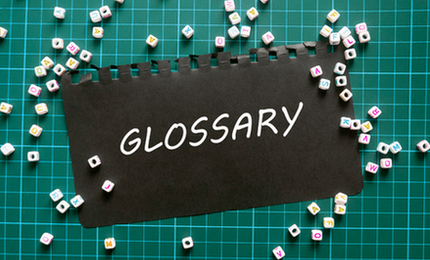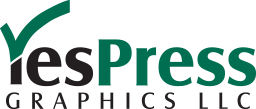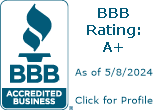Glossary of Terms

We take great pride in making our clients feel confident about their jobs during the production process. To help you gain a better understanding of what’s happening to your project, we’ve compiled a glossary of terms that we commonly use in our industry.
Click on a green letter below to jump to the words that begin with that letter in the index.
-
AC
Shorthand: Author's Correction
-
Abrasion Resistance
The resistance to scratching of a surface of paper by other paper surfaces or other materials.
-
Accordion Fold
A type of paper folding in which each fold runs in the opposite direction to the previous fold, creating a pleated or accordion effect. Typically used in brochures.
-
Achromatic
The non-colors... black, white and gray.
-
Air
Large white areas in a design layout.
-
Alignment
The condition of type and or art materials as they level up on a horizontal or vertical line.
-
Alley
A term for a random, coincidental path or a row of white space within a segment of copy.
-
Alphabet Length
The measured length (in points) of the lowercase alphabet of a certain size and series of type.
-
Antique Finish
Paper with a rough, sized surface used for book and cover stock.
-
Art-Lined Envelope
An envelope that is lined with an extra fine paper; can be colored or patterned.
-
Artwork
All illustrated material, ornamentation, photos and charts etc., that is prepared for reproduction.
-
Assembled view
In illustration, a term used to describe a view of a drawing in its assembled or whole format.
-
Author's Alterations (AA's)
Changes made after composition stage where the customer will be responsible for additional charges.
-
Autochrome paper
Coated papers that are regarded as exceptional for multi-colored printing jobs.
-
Azure
The light blue color used in the nomenclature of "laid" and "wove" papers.
-
BF
An abbreviation for boldface, used to determine where boldface copy is to be used.
-
Back To Back
Print applied to both sides of a sheet of paper (double-sided).
-
Background
That portion of a photograph or line art drawing that appears furthest from the eye; the surface upon which the main image is superimposed.
-
Balloon
In an illustration, any line which encircles copy, or dialogue.
-
Bank Paper
A thin uncoated stock used for making carbon copies.
-
Banker's Flap Envelope
Also called wallet flap; the wallet flap has more rounded flap edges.
-
Banner
The primary headline usually spanning the entire width of a page.
OR
A piece of cloth, vinyl, mesh or other material bearing a symbol, logo, slogan or other message. -
Basis Weight
Basis or basic weight refers to the weight, in pounds, of a ream (500 sheets) of paper cut to a given standard size for that particular paper grade.
-
Bearoff
The adjusting of spacing of type in order to correct the justification.
-
Binding
Various methods of securing folded sections together and or fastening them to a cover, to form single copies of a book.
-
Bleed
Extra ink area that crosses trim line, used to allow for variations that occur when the reproduction is trimmed or die-cut.
-
Blind Emboss
A three dimensional impression is which the image stands just slightly out from the flat background, that is made without using inks or metal foils.
-
Blind Folio
Page number not printed on page.
-
Blow-up
Any enlargement of photos, copies or line art.
-
Body
The main shank or portion of the letter character other than the ascenders and descenders.
OR
A term used to define the thickness or viscosity of printer's ink. -
Body Size
The point size of a particular type character.
-
Bond
A grade of durable writing, printing and typing paper that has a standard size of 17x22 inches.
-
Brace
A character " }" used to group lines, or phrases.
-
Break For Color
In layout design, the term for dividing or separating the art and copy elements into single color paste-up sheets.
-
Broad Fold
A term given to the fold whereby paper is folded with the short side running with the grain.
-
Brocade
A heavily embossed paper.
-
Brochure
A pamphlet that is bound in booklet form.
-
Bulk
A term given to paper to describe its thickness relative to its weight.
OR
A term used to define the number of pages per inch of a book relative to its given basis weight. -
Burst Binding
A binding technique that entails nicking the backfold in short lengths during the folding process, which allows glue to reach each individual leaf and create a strong bond.
-
Calendar Board
A strong paperboard used for calendars and displays.
-
Caliper
The measurement of thickness of paper expressed in thousandths of an inch or mils.
-
Cap Line
An imaginary horizontal line running across the tops of capital letters.
-
Caps & Small Caps
Two sizes of capital letters made in one size of type.
-
Carbon Black
A pigment made of elemental carbon and ash.
-
Case Binding
Books bound using hard board (case) covers.
-
Coated Stock
Any paper that has a mineral coating applied after the paper is made, giving the paper a smoother finish.
-
Collate
To gather sheets or signatures together in their correct order.
-
Color Strength
A term referring to the relative amount of pigmentation in an ink.
-
Comb Binding
A method of binding books whereby holes are drilled on the side closest the spine, and a plastic grasping device is inserted to hold the pages together.
-
Composition
The assembly of characters into words, lines and paragraphs of text or body matter for reproduction by printing.
-
Contrast
The degree of tonal separation or gradation in the range from black to white.
-
Copy
Refers to any typewritten material, art, photos etc., to be used for the printing process.
OR
An identical version of a particular document or other printed material. -
Cover
A term describing a general type of papers used for the covers of books, pamphlets etc.
-
Crop
To eliminate a portion of the art or copy as indicated by crop marks.
-
Cross-over
Elements that cross page boundaries and land on two consecutive pages (usually rules).
-
Cyan
A shade of blue used in the four-color process; it reflects blue and green and absorbs red.
-
Demy
A term that describes a standard sized printing paper measuring 17.5 x 22.5 in.
-
Density
The lay of paper fibers relative to tightness or looseness which affects the bulk, the absorbency and the finish of the paper.
OR
The degree of tone, weight of darkness or color within a photo or reproduction; measurable by the densitometer. -
Die Cutting
A method of using sharp steel ruled stamps or rollers to cut various shapes i.e. labels, boxes, image shapes, either post press or in line. The process of cutting paper in a shape or design by the use of a wooden die or block in which are positioned steel rules in the shape of the desired pattern.
-
Digital Proof
Color separation data is digitally stored and then exposed to color photographic paper creating a picture of the final product before it is actually printed.
-
Display Type
Any type that stands out from the rest of the type on a page which attracts attention of the reader.
-
Dot
The smallest individual element of a halftone.
-
Drill
The actual drilling of holes into paper for ring or comb binding.
-
Drop Folio
Page number printed at foot of page.
-
Drop Shadow
A shadow image placed strategically behind an image to create the affect of the image lifting off the page.
-
Dull Finish
Any matte finished paper.
-
Dye-Based Ink
Any ink that acquires its color by the use of aniline pigments or dyes.
-
Embossed
A method of paper finishing whereby a pattern is pressed into the paper when it is dry.
-
Enamel
A term that describes a glossy coating on paper.
-
Engraving
A printing process whereby images such as copy or art are etched onto a plate. When ink is applied, these etched areas act as small wells to hold the ink; paper is forced against this die and the ink is lifted out of the etched areas creating raised images on the paper.
-
Estimate
The form used by the printer to calculate the project for the print buyer. This form contains the basic parameters of the project including size, quantity, colors, bleeds, photos etc.
-
Even Smalls
The use of smaller sized capitals at the beginning of a sentence without the use of larger sized caps.
-
Expanded Type
Type with width greater than normal producing a rectangular effect.
-
Fan Fold
Paper folding that emulates an accordion or fan, the folds being alternating and parallel.
-
Finish
The surface quality of paper. Some examples include matte (dull), glossy, and satin.
-
Fluid Ink
Also called liquid ink; ink with a low viscosity.
-
Flush Cover
A bound book or booklet etc. having the cover trimmed to the same size as the text.
-
Fogging Back
Lowering density of an image in a specific area usually to make type more legible while still letting image show through.
-
Foils
Papers that have a surface resembling metal.
-
Folio or Page Number
Number of page at top or bottom either centered, flushed left or flushed right often with running headline.
-
French Fold(er)
Folder with printing on one side so that when folded once in each direction, the printing on outside of the folds.
-
Gilding
Sticking on gold leaf to edges of books with a liquid agent and made permanent with burnishing tools.
-
Gloss Ink
Quick drying oil based inks with low penetration qualities, used on coated stock.
-
Grain
Direction of fibers in a sheet of paper governing paper properties such as increased size changes with relative humidity, across the grain, and better folding properties along the grain.
-
Grained Paper
A paper embossed to resemble various textures, such as leather, alligator, wood, etc.
-
Halftone
Tone graduated image composed of varying sized dots or lines, with equidistant centers.
-
Head Margin
That space which lies between the top of the printed copy and the trimmed edge.
-
High Bulk Paper
Paper stock that is comparatively thick in relation to its basis weight.
-
Highlights
The lightest tones of a photo, printed halftone or illustration. In the finished halftone, these highlights are represented by the finest dots.
-
House Sheet
This is a term that refers to a paper that a printer keeps on hand in his shop.
-
IBC
Inside back cover.
-
IFC
Inside front cover.
-
Imposition
Arrangement of pages so that they print correctly on a press sheet, and the pages are in proper order when the sheets are folded.
-
Indicia
Markings pre-printed on mailing envelopes to replace the stamp.
-
Inserts
Extra printed pages inserted loosely into printed pieces.
-
Iridescent Paper
A coated stock finished in mother-of-pearl.
-
Job Number
A number assigned to a printing project used for record keeping and job tracking. Also used to retrieve old jobs for reprints or reworking by customer.
-
Kerning
The narrowing of space between two letters so that they become closer and take up less space on the page.
-
Lacquer
A clear gloss coating applied to printed material for strength, appearance and protection.
-
Laser Engraving
A paper cutting technique whereby laser technology is utilized to cut away certain unmasked areas of the paper. The cutting is a result of the exposure of the paper to the laser ray, which actually evaporates the paper.
-
Layout
A rendition that shows the placement of all the elements, roughs, thumbnails etc., of the final printed piece before it goes to print.
-
Ledger Paper
A stiff heavy business paper generally used for keeping records.
-
Letterpress
Printing that utilizes inked raised surfaces to create the image.
-
Letterspacing
The addition of space between typeset letters.
-
Linen
A paper that emulates the look and texture of linen cloth.
-
Logotype
A personalized type or design symbol for a company or product.
-
Magnetic Black
Black pigments containing black iron oxides, used for magnetic ink character recognition.
-
Mull
Coarse muslin glue placed on the back of book or pads for strengthening.
-
Natural
A term to describe papers that have a color similar to that of wood; also called cream, off-white or ivory.
-
Nominal Weight
When the basis weight of paper differs from the actual weight, the term nominal weight is used.
-
OBC
Outside back cover.
-
OFC
Outside front cover.
-
Oblong
A term used to describe printed books, catalogs etc., that are bound on their shorter side; also referred to as album bound.
-
Offset
The most commonly used printing method, whereby the printed material does not receive the ink directly from the printing plate but from an intermediary cylinder called a blanket which receives the ink from the plate and transfers it to the paper.
-
Offset Paper
A term for uncoated book paper.
-
Onionskin
A light bond paper used for typing and used with carbon paper because of its thinness.
-
Opacity
Quality of papers that defines its opaqueness or ability to prevent two-sided printing from showing through.
-
Opaque Ink
Ink that completely covers any ink under itself.
-
Over Run
Surplus of copies printed.
-
Overhang Cover
A cover of a book that extends over the trimmed signatures it contains.
-
Overprinting
Any printing that is done on an area that has already been printed.
-
Page
One side of a leaf.
-
Page Makeup
The assemblage of all the necessary elements required to complete a page.
-
Paperboard
Any paper with a thickness (caliper) of 12 points (.3mm) or more.
-
Papeterie
A high-grade soft paper used for personal stationery because it accepts handwriting well.
-
Parchment
A hard finished paper that emulates animal skin; used for documents, such as awards, that require writing by hand.
-
Peeling
Delamination.
-
Perf Marks
Markings usually dotted lines at edges showing where perforations should occur.
-
Perfect Binding
Binding process where backs of sections are cut off, roughened and glued together, and rung in a cover.
-
Pica
Standard of measurement, 1/6 inch. 1 pica = 12 points 72 points = 1 inch
-
Plate Finish
Any bond, cover or bristol stock with an extremely smooth finish achieved by calendaring.
-
Point
A measurement unit equal to 1/72 of an inch. 12 points to a pica, 72 points to an inch.
-
Positive
Film that contains an image with the same tonal values as the original; opposite of a negative.
-
Ppi
Pixels per inch.
-
Premium
Any paper that is considered better than #1 by its manufacturer.
-
Primary Colors
In printing the four primary colors are cyan (blue), magenta (red), yellow and black.
-
Printability
The quality of papers to show reproduced printed images.
-
Process Inks
Printing inks, usually in sets of four colors. The most frequent combination is yellow, magenta, cyan, and black, which are printed, one over another in that order, to obtain a colored print with the desired hues, whites, blacks, and grays.
-
Proof
Resembling finished piece in every respect, used by the designer as a final check on the appearance and feel of the printed material as a guide for the size and position of elements.
-
Rag paper
Papers with a complete or partial content of cotton fibers.
-
Ragged Left
The term given to right-justified type that is uneven on the left.
-
Ragged Right
The term given to left-justified type that is uneven on the right.
-
Ream
500 sheets of paper.
-
Recto
The odd numbered pages (right hand side) of books.
-
Register
The arrangement of two or more images in exact alignment with each other.
-
Run-Around
A term given to copy that accommodates the lines of a picture or other image or copy.
-
Running Head
A title at the top of a page that appears on all pages of a book or chapter of a book.
-
Saddle Stitching
Stitching where the wire staples pass through the spine from the outside and are clinched in the center. Only used with folded sections, either single sections or two or more sections inset to form a single section.
-
Safety Paper
A paper that shows sign of erasure so that it cannot be altered or tampered with easily.
-
Satin Finish
A smooth delicately embossed finished paper with sheen.
-
Scaling
The enlargement or reduction of an image or copy to fit a specific area.
-
Score
Impressions or cuts in flat material to facilitate bending or tearing.
-
Self Cover
A cover made out of the same paper stock as the internal sheets.
-
Side Stitching
Stitching where the wire staples pass through the pile of sections or leaves gathered upon each other and are clinched on the underside.
-
Signature (Section)
Printed sheet (or its flat) that consists of a number of pages of a book, placed so that they will fold and bind together as a section of a book. The printed sheet after folding.
-
Smoothness
That quality of paper defined by its levelness which allows for pressure consistency in printing, assuring uniformity of print.
-
Spiral Bind
A binding whereby a wire or plastic is spiraled through holes punched along the binding side.
-
Stability
The quality of paper to maintain its original size when it undergoes pressure and moisture changes.
-
Stock
A term for unprinted paper or other material to be printed.
-
Synthetic Papers
Any petroleum based waterproof papers with a high tensile strength.
-
Tack
The adhesive quality of inks.
-
Tag
A dense, strong paper stock.
-
Text
A high quality printing paper.
-
Ticket Envelope
Envelopes used mostly for theater tickets, with no other particular usage.
-
Tooth
The rough surfaced finish of papers such as vellum or antique.
-
Transparent
Inks that do not block out the colored inks that they print over, but instead blend with them to create intermediate colors.
-
Up
A term used to describe how many similar sheets can be produced on a larger sheet; two up, four up, etc.
-
Varnish
A clear shiny ink used to add gloss to printed pieces. The primary component of the ink vehicle.
-
Vellum
A finish of paper that is rough, bulky and has a degree of tooth.
-
Velour Paper
A term given to papers that are coated with an adhesive and then flock dusted.
-
Verso
A term given to the left-hand or even-numbered pages of a book.
-
Vignette
Fade to white or small decorative design or illustration. A photo or illustration etc., in which the tones fade gradually away until they blend with the surface they are printed on.
-
Watermark
A translucent logo that is embossed during the papermaking process while the paper slurry is on the dandy roll.
-
Web Press
Cylinder printing machine in which the paper is fed from a continuous reel, as opposed to sheet fed.
-
Wedding Paper
A soft paper that is thick and holds up well under embossing.
-
Widow
A single word or two left at the end of a paragraph, or a part of a sentence ending a paragraph, which loops over to the next page and stands alone. Also, the last sentence of a paragraph which contains only one or two short words.
-
Wire Stitching Or Stapling
To fasten together sheets, signatures, or sections with wire staples. 3 methods... saddle stitching, side stitching, and stabbing.
-
Wove
A smooth paper made on finely textured wire that gives the paper a gentle patterned finish.
-
Writing Paper
Another name for bond paper.
-
Xerographic Paper
Papers made to reproduce well in copy machines and laser printers.


